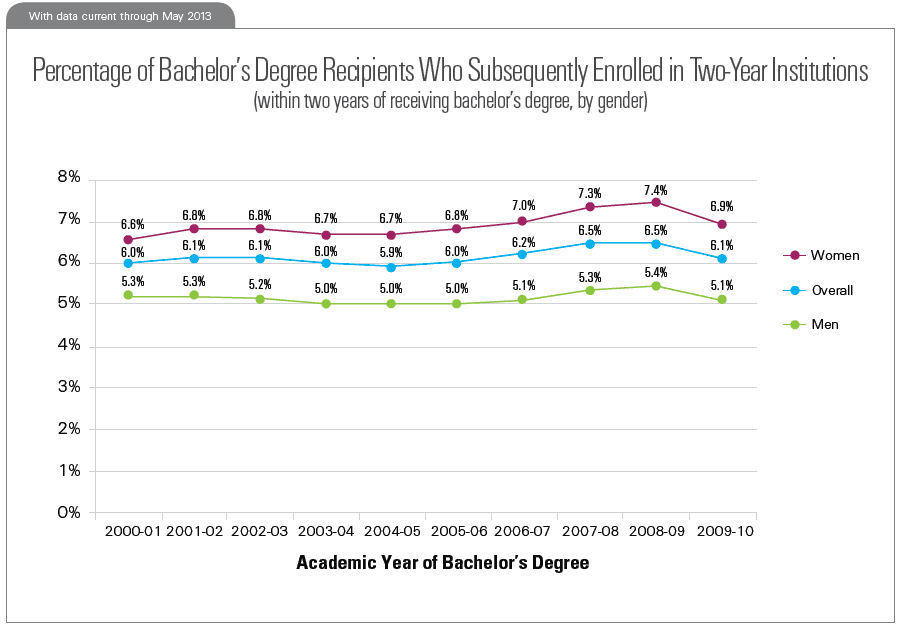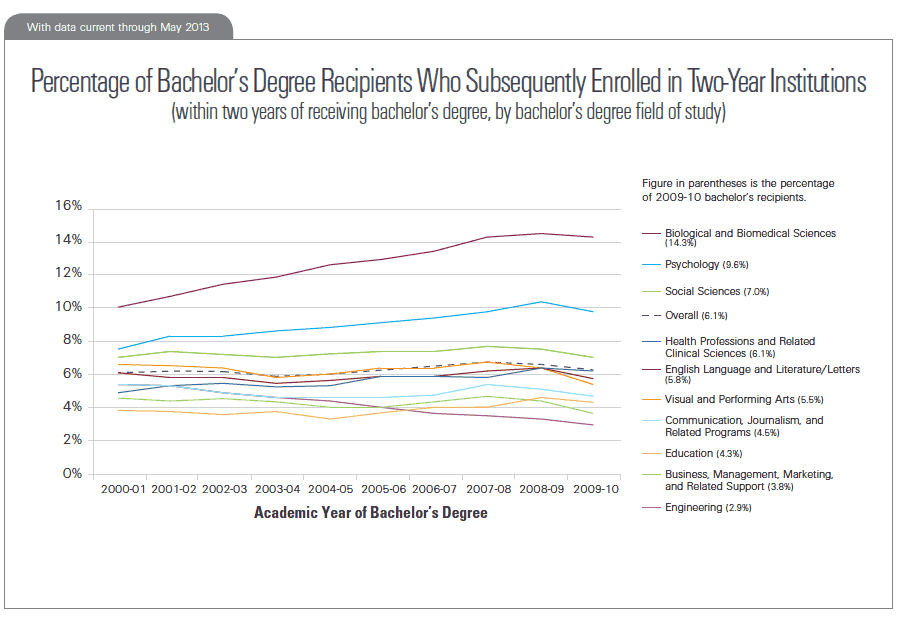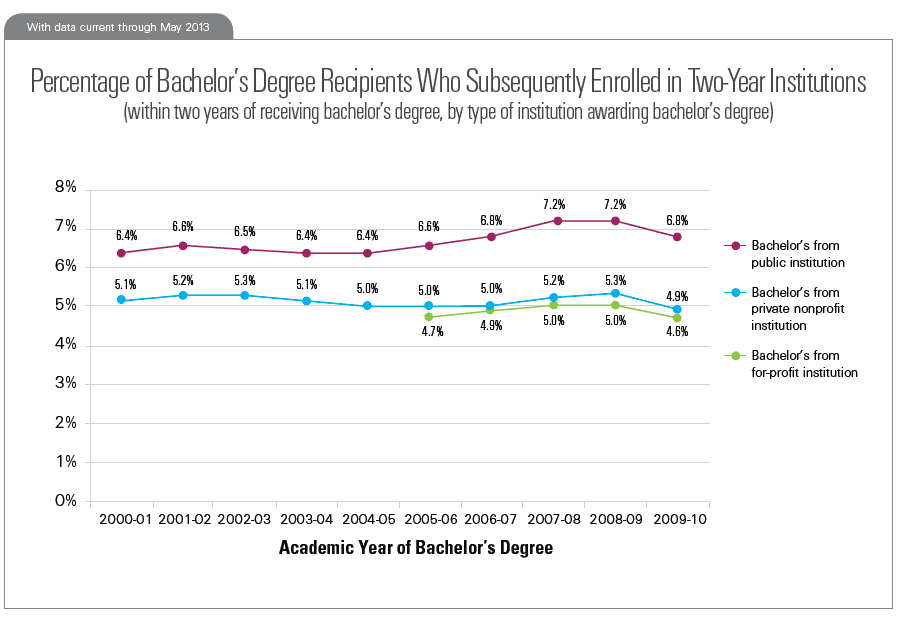Subsequent Enrollment – 2013
Bachelor’s Degree Recipients Who Subsequently Enrolled in Two-Year Institutions
6.5% of students who graduated with a bachelor’s degree in 2008-09 enrolled in a two-year institution within the next two academic years, an increase from 5.9 percent of 2004-05 graduates.
Supplementing a Four-Year Degree at a Two-Year Institution
It is unusual for bachelor’s degree recipients to continue their education at two-year institutions, but the numbers grew slightly during the Great Recession when even college graduates had a harder time finding jobs. The figure shows that 6.5 percent of students who graduated with a bachelor’s degree in 2008-09 enrolled in a two-year institution within the next two academic years, an increase from 5.9 percent of 2004-05 graduates. The practice appears to be diminishing as the recovery progresses, with 6.1 percent of 2009-10 bachelor’s degree recipients enrolling in a two-year institution.
The percentage of women enrolling in a two-year institution after receiving a bachelor’s degree is 1.8 percentage points higher than that of men, a margin that has increased over the last 10 years.

Note: Individuals are counted as having enrolled in a two-year institution if they enrolled at any point in the two academic years subsequent to the academic year of the bachelor’s degree. Data are weighted to account for growth in the Clearinghouse’s coverage of two-year institutions over time. Gender is imputed in cases where institutions did not report it.
Trend Varies by Field of Study
The proportion of graduates pursuing additional education in a two-year institution varies depending on the field of study of the bachelor’s degree. Career fields, such as health care and social services, often require additional training and credentials that can be earned at two-year institutions.
The figure shows two-year enrollment trends for the 10 most common fields of study for bachelor’s degree recipients. The fields are listed in descending order by the percentage of 2009-10 graduates who enrolled in two-year institutions within the next two academic years. The largest increase, with over 14 percent of 2009-10 graduates enrolling in a two-year institution, is in biological and biomedical sciences. Graduates in business and engineering have the lowest rates of enrollment.

Note: Data are weighted to account for growth in the Clearinghouse’s coverage of two-year institutions over time. The fields of study shown above are the 10 most commonly reported to the Clearinghouse for bachelor’s degree recipients since 2000-01. Fields of study correspond to NCES Classification of Instructional Program codes (two-digit CIP family codes). CIP codes were reported (or imputed by the Clearinghouse) for 85 percent of all bachelor’s degrees in the data set.
Publics and Privates Diverge
The practice of enrolling at a two-year institution, after graduating with a bachelor’s degree, is most common among graduates of public institutions. For the graduating class of 2009-10, 6.8 percent of bachelor’s recipients from public institutions went on to enroll in a two-year institution within the next two academic years. The comparable percentage for graduates of private nonprofit institutions is almost two percentage points lower, a margin which has increased steadily since 2002-03.

Note: Individuals are counted as having enrolled in a two-year institution if they enrolled at any point in the two academic years subsequent to the academic year of the bachelor’s degree. Data are weighted to account for growth in the Clearinghouse’s coverage of two-year institutions over time. As a result of substantial growth in the number of for-profit enrollments reported to the Clearinghouse during the study time frame, a comparable trend for that sector is available starting with 2005-06.
Sponsored in part by the Lumina Foundation, committed to enrolling and graduating more students from college.
